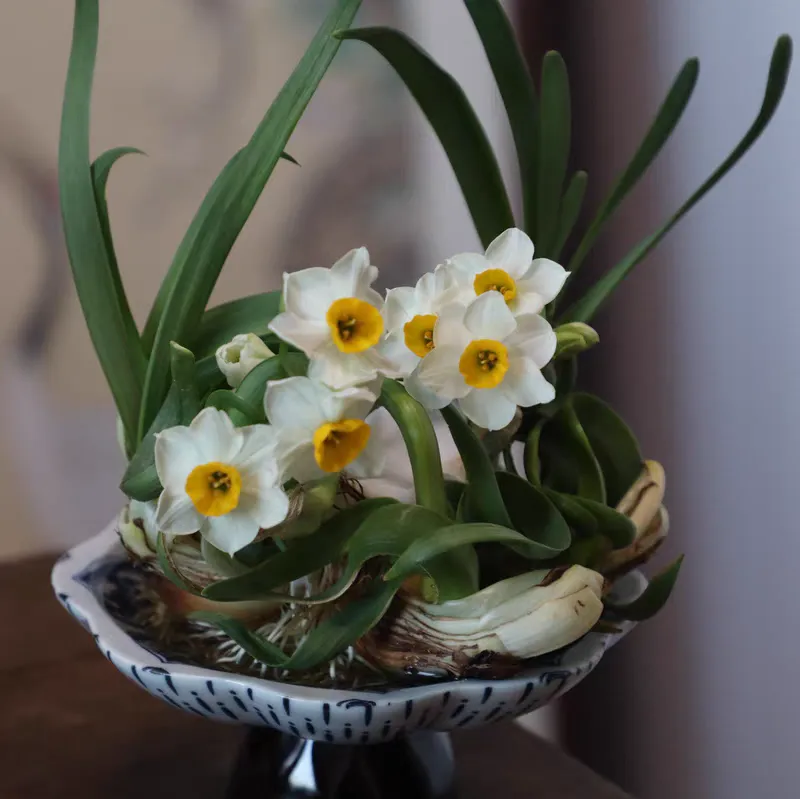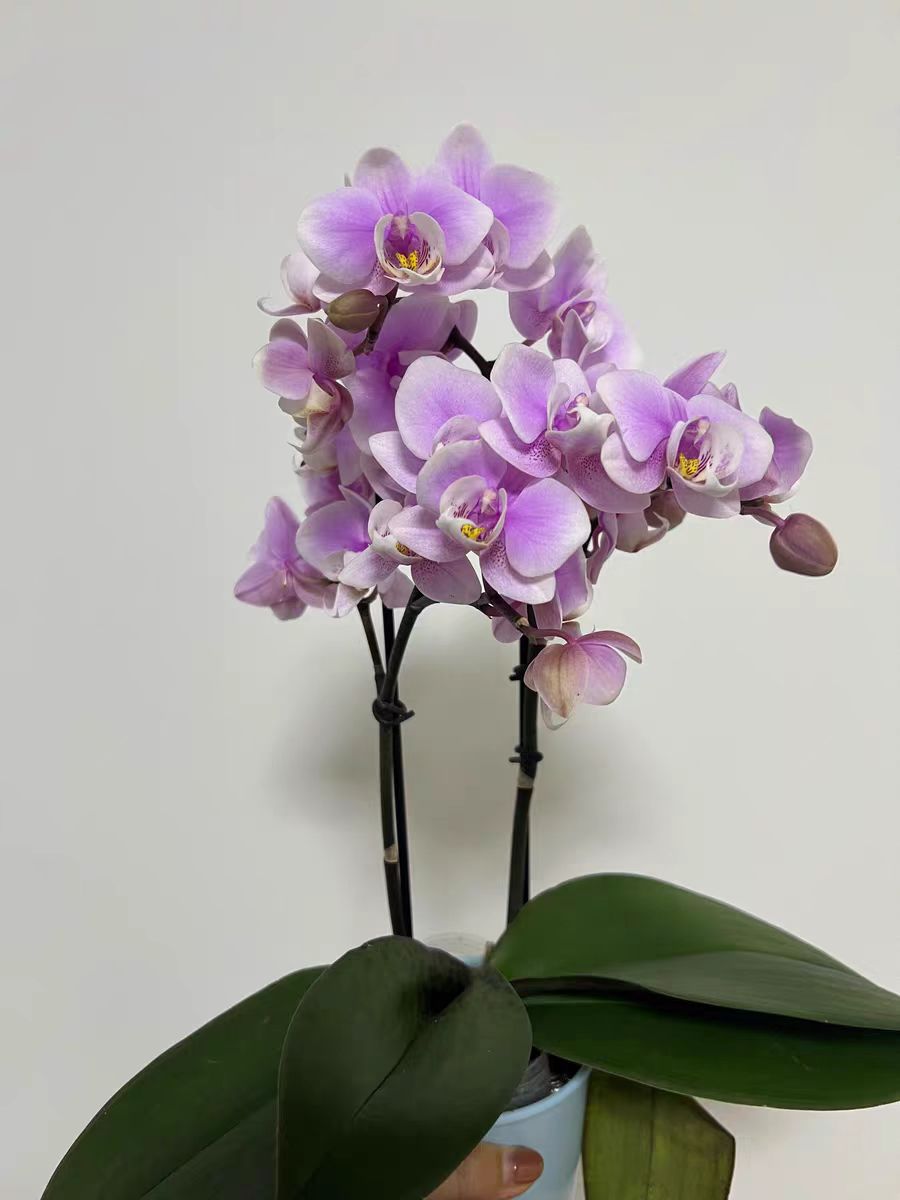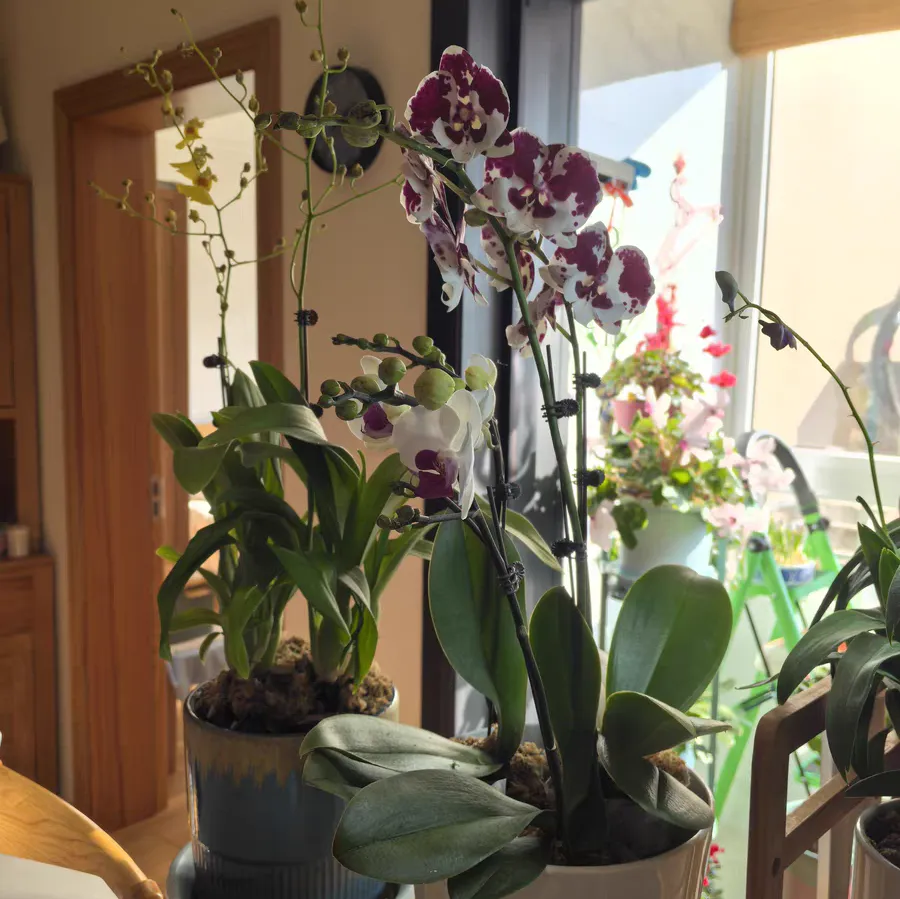Narcissus, with its fresh and elegant temperament and rich fragrance, is deeply loved by people. However, in the process of cultivation, yellowing leaves is a common problem, which not only affects the beauty but also may threaten the health of the plant. Here are the reasons and solutions.
### Light Issues
Narcissus is a light-loving plant, and sufficient light is the key for it to carry out photosynthesis and produce nutrients. However, the light intensity needs to be accurately controlled, as too strong or too weak light may cause the leaves to turn yellow. If the narcissus is placed in a dark corner for a long time, photosynthesis will be hindered, and the leaves will gradually lose their green color and turn yellow due to the lack of sufficient photosynthetic products. On the contrary, if it is exposed to direct strong light without any shelter in summer, the leaf tissue is extremely easy to be burned, and the leaves will also turn yellow.
It is of great importance to create a suitable light environment for narcissus. In spring, autumn and winter, it can be placed on a south-facing windowsill to ensure 4 - 6 hours of light exposure per day. In summer, it is necessary to set up a sunshade net or move it to a bright place indoors without direct light to avoid direct strong light.
### Improper Water Management
Water is the basis for the growth of narcissus, but a slight mistake in controlling the watering frequency and quantity will cause problems. Excessive watering will lead to waterlogging in the soil for a long time, and the roots will suffocate and rot due to lack of oxygen, which will in turn cause the leaves to turn yellow. If the watering is insufficient, the soil will be dry and compacted, and the plant cannot obtain enough water, so the leaves will turn yellow and curl due to water shortage.
Reasonable water management is the key to cultivation. Under normal circumstances, water every 2 - 3 days to keep the soil moist but not waterlogged. In summer when the temperature is high, the water evaporates quickly, so the watering frequency can be appropriately increased; in winter when the temperature is low and the growth of narcissus is slow, the watering should be reduced to avoid freezing the roots.
### Nutrient Deficiency
The growth and flowering of narcissus are inseparable from sufficient nutrients. If the soil fertility is insufficient and fertilizers are not added in time, the leaves will turn yellow due to the lack of key elements such as nitrogen, phosphorus and potassium. However, excessive fertilization or too high fertilizer concentration is also harmful, as too high salt content may damage the roots, cause fertilizer damage, and make the leaves turn yellow and fall off.
During the growth cycle of narcissus, fertilization should be carried out regularly. During the vigorous growth period, apply a thin liquid fertilizer every 1 - 2 weeks, mainly nitrogen fertilizer, to promote the growth of branches and leaves. During the budding period, increase the application of phosphorus and potassium fertilizers, such as potassium dihydrogen phosphate solution. After dilution, spray it on the leaves or pour it on the roots to help with flower bud differentiation and flower blooming. When fertilizing, be sure to strictly control the dosage according to the product instructions to avoid problems caused by improper fertilization.
### Pest and Disease Attacks
Narcissus is vulnerable to pest and disease attacks, such as leaf blight and aphids. In the early stage of leaf blight, small brown spots will appear on the leaves, and then gradually expand, causing the leaves to turn yellow and wither. Aphids gather on the back of the leaves to suck the sap, making the leaves turn yellow and curl, seriously affecting the growth of the plant.
In daily maintenance, the maintenance environment should be kept well-ventilated to reduce the probability of pest and disease occurrence. Once pests and diseases are found, immediate action should be taken. For leaf blight, fungicides such as carbendazim and thiophanate-methyl can be selected and sprayed after dilution according to the instructions. For aphids, insecticides such as imidacloprid can be used for spraying to ensure that the narcissus recovers healthy growth and regains its vitality and beauty.
Why do the leaves of narcissus turn yellow and become soft?

Share with
Tagged in :




Leave a Reply